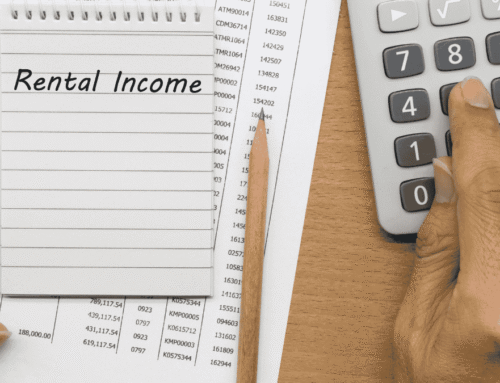How to Build Your Out of State Rental Property Portfolio
Building Your Out of State Real Estate Empire: Strategies for the Savvy Investor
As real estate investors, we often start close to home. It’s comfortable, familiar, and easy to manage. But what happens when you want to truly scale your wealth and diversify your risk? That’s when you start thinking about investing out of state. It’s a strategy I’ve embraced, and it opens up a world of opportunity far beyond your local market.
I’ve been buying rental properties all over the U.S. since 2016. We’ve closed on over 120+ units. My Wife and I manage our U.S. portfolio remotely from our home in Argentina. To say we’ve learned a lot over the past 10 years would be a major understatement. In this article, I’m going to cover some of the do’s and don’ts when building and scaling your out-of-state property portfolio.
Key Takeaways
- Diversify Risk: Spread your investments across different economies and market cycles.
- Build a Team: Success hinges on reliable local partners in each market.
- Leverage Technology: Tools are essential for underwriting and managing properties remotely.
- Leverage Financing: Use the right type of mortgage product to scale without limits.
- Strategic Scaling: Plan your expansion carefully to maximize returns and minimize pitfalls.
- Take The Long View: Don’t chase cheap! It’s better to overpay for the right property than get a discount on a problem!
Investment Properties: Browse Turnkey Rental Properties For Sale in Our Online Portal
The Vision – Why Expand Out of State?

Out of State Rental Properties in Cleveland, Ohio
The idea of investing in properties hundreds or thousands of miles away might seem daunting at first. However, the benefits of building an out of state real estate portfolio are compelling for any investor serious about long-term wealth creation. This strategy has worked well for me and my family, but it’s not been without a steep learning curve. After all, the best opportunities aren’t always in your backyard!
Mitigating Local Risk
It’s true what they say: real estate is local. While most out of state investors start because they can’t find good cash flowing rental properties in their local market, there are other good reasons to consider branching out. Every local market has its unique ups and downs. A single industry downturn, a natural disaster, or a sudden policy change can significantly impact your portfolio if all your eggs are in one basket. Take Florida for example. Recent climate events have seen home insurance premiums (and HoA fees for some older condos) skyrocket. This has really impacted operating costs and cashflow for rental property investors in the Sunshine State.
By spreading your investments across multiple markets you can – to some extent – diversify this risk. If one market experiences a shock of some kind, income from other markets will support your portfolio. This gives you more problem-solving options while providing stability and consistency.
Capitalizing on Diverse Growth Cycles
Real estate markets operate on different cycles. This has never been more true than right now in the United States. Overheated markets like some of those in Florida, California and Texas are seeing house prices decline. At the same time, other more affordable markets like Cleveland and Kansas City (where I’m buying this year) are proving to be much more price-resilient. A wide geographical focus allows you to maximize your potential for appreciation and rental income across the board.
Strategic Pillars of an Out of State Portfolio

Being Successful in Out of State Real Estate Investing means Building a Team
Building an out of state portfolio isn’t about randomly buying properties. Getting it right requires creating a strategic framework built on careful market selection, team building, and smart use of technology. As a remote investor, I rely heavily on a range of data analysis tools for my market analysis and research. I have also spent a huge amount of time and effort building high quality local teams in all of the markets I own rental properties in.
Market Selection Beyond Your Backyard
This is your first step. You need to identify markets with strong fundamentals. By that, I don’t mean cheap houses and high rents. In fact, I’ve purchased houses on that basis and they have never quite worked out as I’d hoped. As one of my mentors put it best: “D-Class houses come with D-Class tenants”. Today, I focus on out of state markets with strong fundamentals that support the case for consistent rental income and long-term equity growth:
- Strong Jobs Market: New jobs attract new residents, increasing housing demand. Resilient sectors offer long-term income security for residents and landlords.
- Positive Population Migration: People moving into an area signals sustained demand. More demand equates to long-term capital appreciation, and a bigger tenant base.
- Affordability and Rent-to-Value Ratios: Find markets where property prices allow for strong cash flow. We want renters to be paying less than 30% of their household income on housing costs to avoid being ‘cost-burdened’.
- Landlord-Friendly Regulations: You really need to understand local laws regarding evictions, rent control, and property taxes. In Texas, there is a 3-day eviction process. In California, the same process can take literally years and cost tens of thousands of dollars.
- Diverse Economies: Markets not reliant on a single industry are more resilient when it comes to an economic slowdown or even recession. Healthcare and education are great examples.
My own experience investing in markets like Cleveland and Kansas City has reinforced the importance of these fundamentals. These cities offer strong job growth, relatively affordable housing, and consistent rental demand. Right now, these two markets are seeing prices stabilize – even rise marginally – while other markets and the national average are on the downturn.
Building Your Out of State Team
This is the most important part of this entire process. The real problems I’ve had over the last yen years haven’t been property related, they’ve been people problems. You cannot be everywhere at once, and that’s okay. As remote investors we rely heavily on our local partners for almost everything from acquisitions and sales, to property management. Your success in building and scaling a rental property portfolio hinges on building a reliable local team in each market. This typically includes:
- A Trustworthy Real Estate Agent: Someone who understands investor needs and local market nuances. While analysing the data will get you so far, nothing replaces local knowledge and experience.
- A Professional Property Manager: Essential for day-to-day operations, tenant screening, and maintenance. This is an absolute non-negotiable for remote investing. Sadly, a good property manager is harder to find than you might hope.
- Reliable Contractors/Handymen: For repairs and maintenance, having trusted contacts is invaluable. Even if a property manager is handling repairs, you might find that it’s sometimes cheaper and quicker to use your own trusted contacts.
- Local Attorney/Accountant: For legal and tax advice specific to that state/city.
Leveraging Technology and Data
Technology is your best friend when managing a dispersed portfolio. Here are some of the tools I use on a daily basis:
- Property Management Software: For rent collection, expense tracking, and maintenance requests.
- Communication Tools: Video calls and messaging apps to stay connected with your team.
- Data Analytics Platforms: To monitor market trends, rental comps, values, and property performance from anywhere. There are also some fantastic tools that will help you to underwrite potential acquisitions.
One thing to make note of here is that data will only get you so far. While market research will get you to the right regional market, it’s local expertise and experience that will guide you to the right neighbourhood, street and property. That’s why building a high quality local team is so important. It’s the combination of data and local market knowledge that will drive your success and help you avoid the potential disasters!
Practical Steps and Pitfalls to Avoid Investing Out of State

Take Things Step by Step When Investing out of State
While the strategy is clear, execution requires discipline and an awareness of common mistakes.
Start Small, Scale Smart
Don’t try to conquer ten markets at once. Start with just one new market and become an expert. Look for good solid metrics that I mentioned above (landlord regs, housing affordability, population growth, jobs market, rent-to-price ratios). Then start building your local team. Have conversations with people, join local REI groups, get to understand the local dynamics. Then you can start looking for your first deal.
Due Diligence is Paramount
When you can’t physically visit every property (I haven’t visited the vast majority of my rentals), your due diligence process becomes even more critical. You’ll be relying heavily on detailed inspections, virtual tours, and your trusted local team. Never skip steps just because you’re remote. These are the absolute bare minimum:
- General Home Inspection: Make sure you get a good home inspector who id thorough. You want detailed feedback on the the entire property, especially the major mechanicals, wiring, and plumbing.
- Sewer Scope: I never used to get a sewer scope. Then I had to pay to replace a sewer line. now I get a sewer scope every single time. A scope will tell you if there is line damage or root ingress – both of which can cost may thousands of dollars to rectify.
- Roof Inspection: If your home inspector doesn’t want to get on up on the roof, then pay a local roofing contractors a call out fee to give it a once over. If the roof has less than 10 years life then you’ll need to either negotiate on price, or underwrite your deal to accommodate a bigger capital expenses reserve.
- Title Report: This should really go without saying, but a couple of hundred buck on a title report will not only tell you if there are any liens, judgements, or encumbrances, it might also give you a clue as to why the seller is selling. If they are underwater on a big mortgage, you might well be able to negotiate a better deal on price.
A quick word of advice: I would avoid fixer-uppers or value-add properties. Most of my own portfolio was purchased as turnkey properties. While there is certainly money to be made fixing up a property, or using the BRRRR method, managing
Financing Out of State Real Estate Investments
Scaling a rental property portfolio means having access to a reliable funding source. You’ll want to explore various financing options. Local banks in your target markets might offer more competitive rates, or you might consider portfolio loans if you’re acquiring multiple properties. You will likely want to consider using DSCR loans to purchase or refinance your rentals. Lenders won’t typically limit you based on the number of loans you have, your personal income, or your debt-to-income ratio.
Common Pitfalls to Avoid:
- Neglecting Local Expertise: Thinking you can manage everything from afar without a strong local team is a recipe for disaster.
- Ignoring Local Nuances: What works in one market might not work in another. Adapt your strategy to local tenant preferences, property types, and regulations.
- Over-Leveraging: While leverage is powerful, don’t overextend yourself, especially when entering new, unfamiliar markets. I’ve made this mistake before, and it came back to bite me… hard!
- Underutilizing Cashflow: While cashflow is the lifeblood of real estate investing, it is a tool to service debt and pay for operations costs, not a coupon to buy lunch with. Treat your rental properties like an asset, not an ATM. Use excess cashflow to make extra mortgage payments or build cash reserves to cover vacancies, capital expenditures, and/or value-add improvement to your properties.
- Buying Cheap: While some real estate deals look great on paper (because they’re cheap), they’re cheap for a reason. Every single low value/high rent property I’ve owned has been a pain to manage. Today, I would much rather overpay for the right property, then underpay for a problem. You’re not looking to make a profit on day one. Buy right, and let time do the heavy lifting for you.
Conclusion: Your Path to a Diversified Out of State Real Estate Portfolio
Building an out of state real estate portfolio is a powerful way to accelerate your wealth-building journey. Being successful demands careful planning, a commitment to building strong relationships, and a willingness to leverage technology.
My own experience has shown me that with the right strategy and a trusted network, geographical distance is no barrier to profitable real estate investing. Whether you’re acquiring your first out-of-state property or expanding an existing portfolio, the principles remain the same: research, build your team, and stay disciplined. The opportunities are vast for those willing to look beyond their immediate horizon.
Tools and Resources For Out of State Investors

Leverage Technology For Your Out of State Rental Property Strategy
Real Estate Market Research Tools
While tools like Zillow, Trulia, Realtor.com and Redfin offer a brief snapshot of most real estate markets, the data – in my opinion – can be unreliable – misleading even. Then you have actual market data on a monthly basis from the likes of NAR and Realtor.com. Those reports can give you a real time snapshot into any given market, but the data doesn’t extend to the neighbourhood or street level.
When I’m researching potential neighbourhoods, I prefer to use paid-for tools with more reliable, up to date, and hyper local data. I personally like the Neighbourhood Scout research reports. They have a lot of hyper local neighbourhood data that’s up to date. All that said, data doesn’t replace local expertise – it’s complementary. Make sure to focus on building your local team to get a holistic view of the market you’re interested in buying rental properties in.
Rental Property Analysis Tools
When you’re underwriting a potential rental property investment, it’s crucial to really understand the income and expenses related to that specific property. There are some really useful online tools that can help you do that. Personally, I use DealCheck, but there are others. Remember to include all your costs, including sufficient reserves for vacancies, maintenance and capital expenditures.
Property Management Software for Out of State Rentals
The days of excel spreadsheets are well and truly over. You’ll use property management software to find, and vet tenants, collect rent, communicate with your tenants, manage maintenance, and keep records of your income and expenses. All these platforms have a range of features, including generating lease agreements.
I’ve used a range of property management software to manage my out of state rentals. In cases where I’ve had a local property manager, I’ve just had to use whatever system they are using. When I’ve self-managed, I’ve used TenantCloud, Buildium, AppFoilo, and Hemlane. Right now, I’m also considering TurboTenant. My advice is to thoroughly review each option, and pick the one that has all the features you need as an out of state investor.
Investment Properties: Browse Turnkey Rental Properties in Our Online Portal
GROW YOUR WEALTH WITH U.S. REAL ESTATE
Start your U.S. real estate investment journey today with high-quality cashflow real estate. Book a Free 1-2-1 Discovery Call with a member of our senior management team to discuss your personalized strategy.
“Having personally invested in over 120 US rental properties from overseas, I know the true value of getting the right advice and support.
David Garner – Cashflow Rentals
GROW YOUR WEALTH WITH U.S. REAL ESTATE
Start your US real estate investment journey today, and book a Free 1-2-1 Discovery Call with a member of our senior management team.
“Having personally invested in over 120 US rental properties from overseas, I know the true value of getting the right advice and support.
David Garner – Cashflow Rentals

❓ Frequently Asked Questions
What are the primary benefits of building an out of state real estate portfolio?
Building an out of state portfolio allows investors to diversify risk across different markets, capitalize on varying economic cycles, and access a broader range of investment opportunities driven by diverse local economies and population shifts.
How should investors approach market selection when investing out of state?
Focus on markets with strong fundamentals like consistent job growth, positive population migration, landlord-friendly regulations, and diverse industries. Look beyond your immediate area to find emerging opportunities.
What is the importance of a strong local team for a out of state investing?
A reliable local team, including property managers, real estate agents, and contractors, is crucial for effective remote management. They provide on-the-ground expertise, handle day-to-day operations, and ensure your investments are well-maintained.
How can technology aid in managing an out of state real estate portfolio?
Technology, such as property management software, communication tools, and data analytics platforms, enables efficient oversight of properties, streamlined tenant relations, and informed decision-making from a distance.
What are some common pitfalls to avoid when expanding your real estate investments out of state?
Avoid insufficient due diligence, neglecting to build a trusted local team, over-leveraging, and failing to adapt strategies to local market nuances. Thorough research and a phased expansion approach are key to mitigating risks.
What is the best property management software for out of state rentals
There are a range of tools to help you manage out of state rental properties, including TurboTenant, Buildium, Appfolio, TenantCloud and more. Make sure to review the features of all the options and choose the one that works best for you and your outs of state investing strategy.
What is the best real estate market for out of state investors
The best markets for out of state investors tend have decent housing affordability, string jobs markets, and favourable landlord/tenant laws. Investing in the suburbs of cities like Cleveland and Kansas City offer a solid combination of risk and reward for out of state investors.












